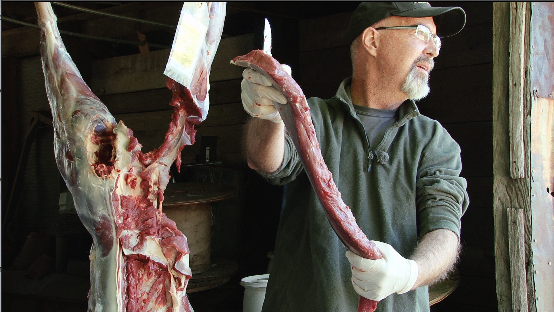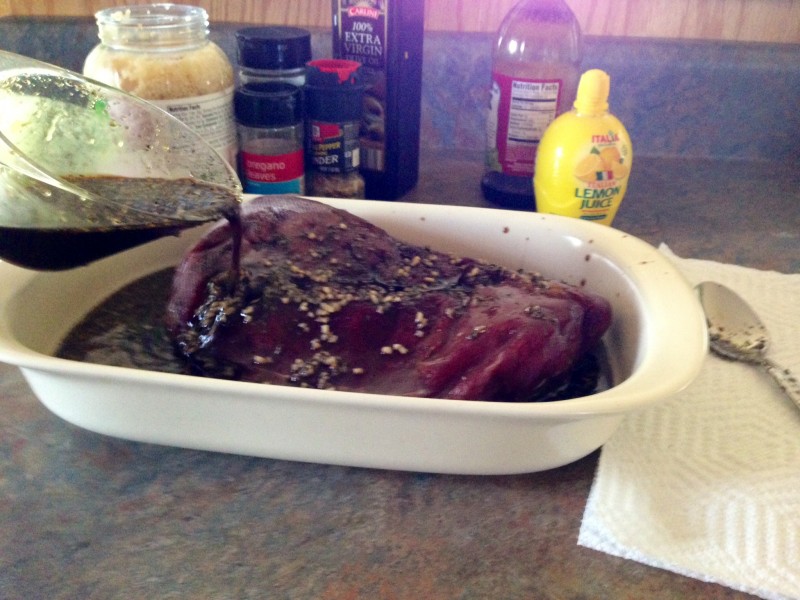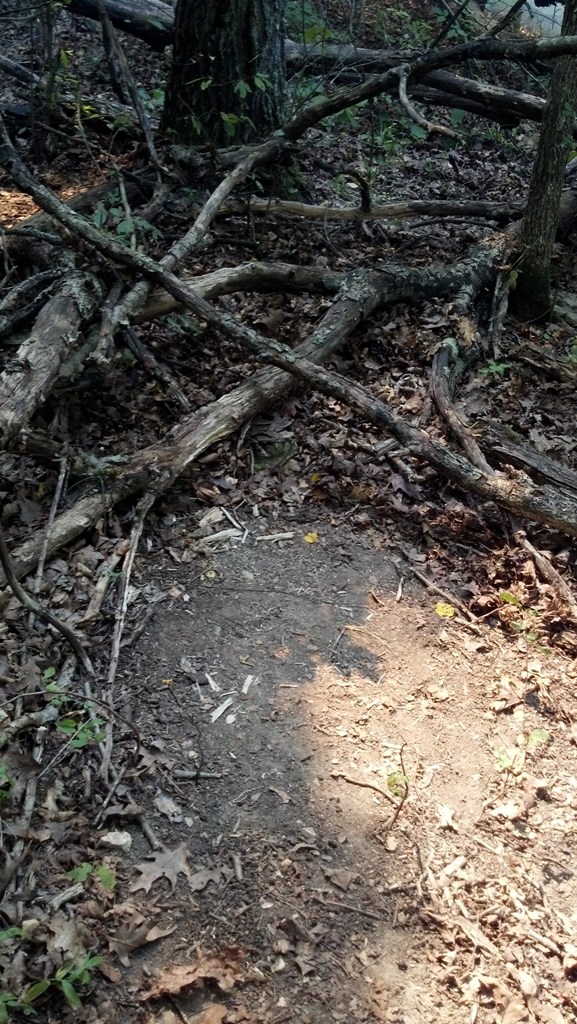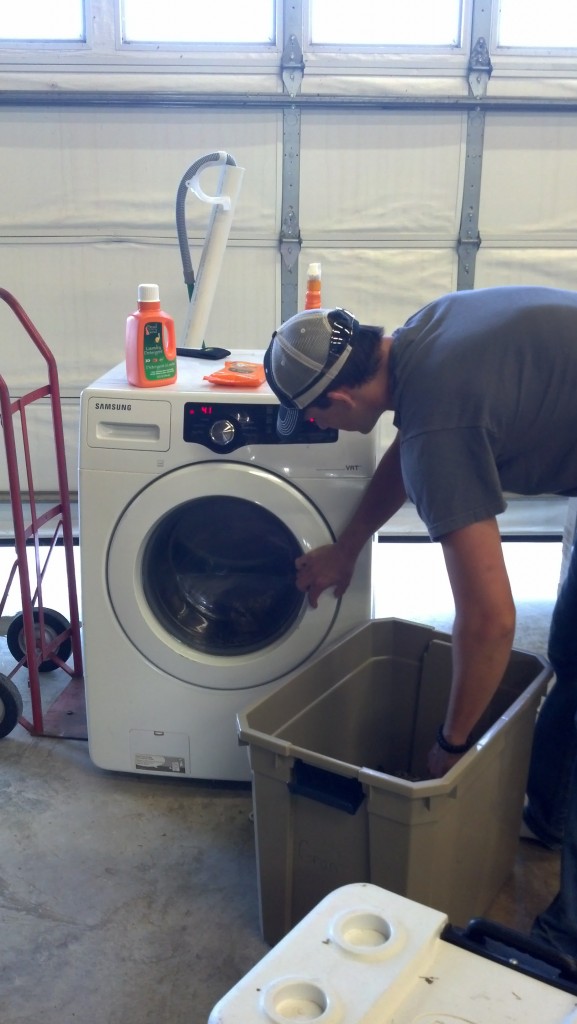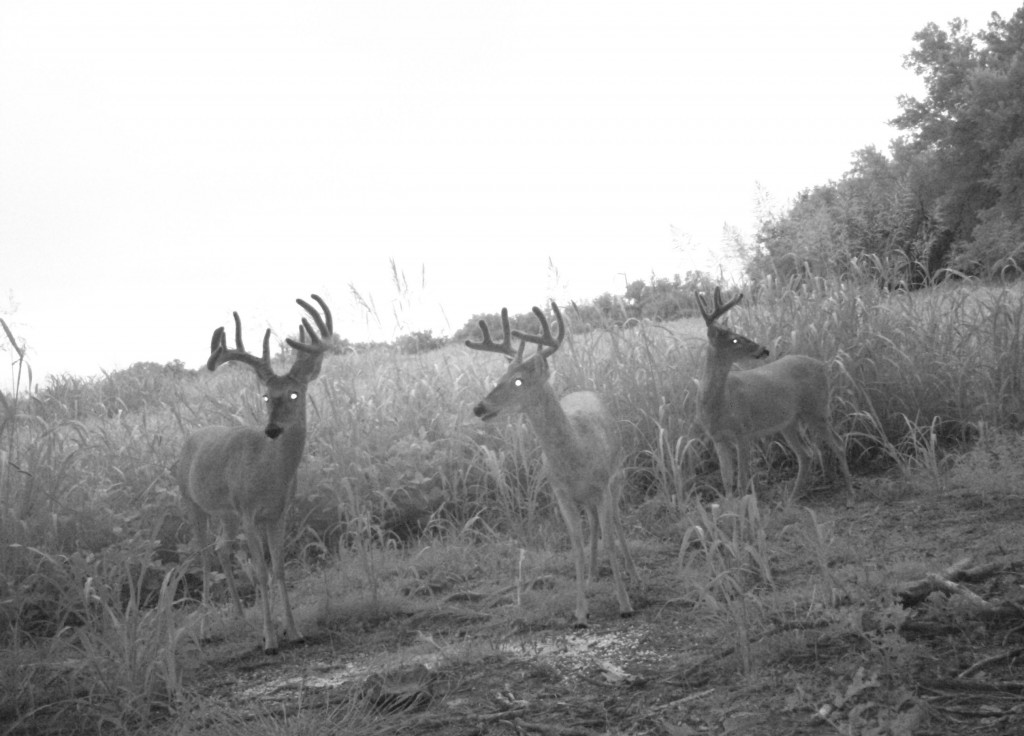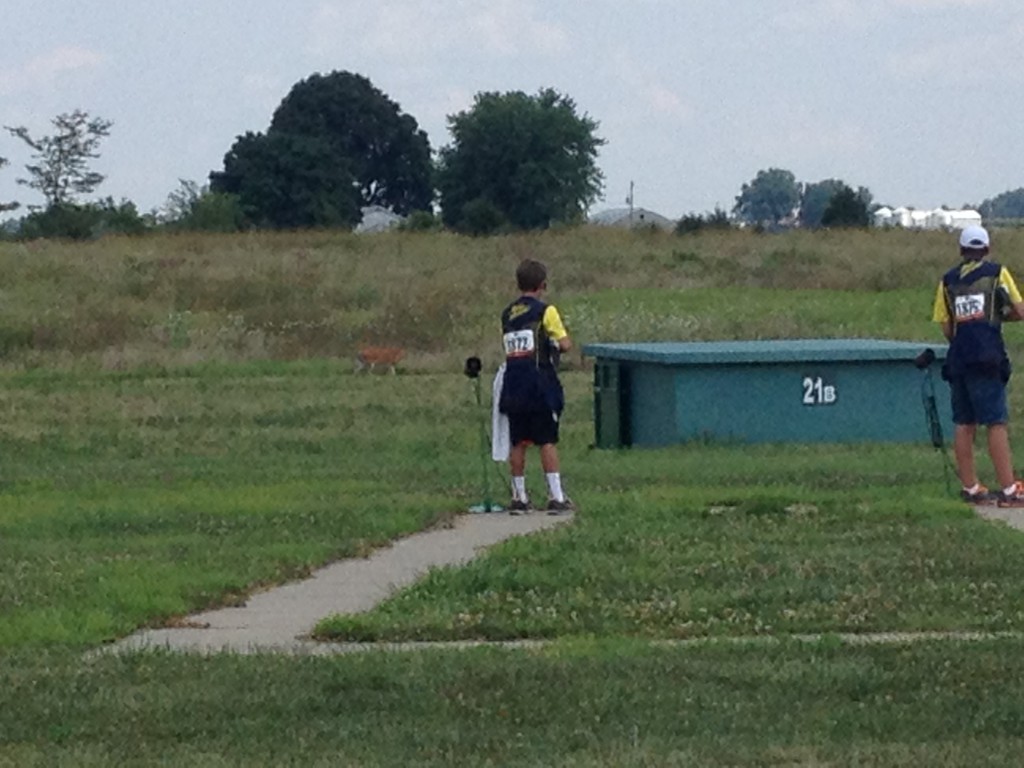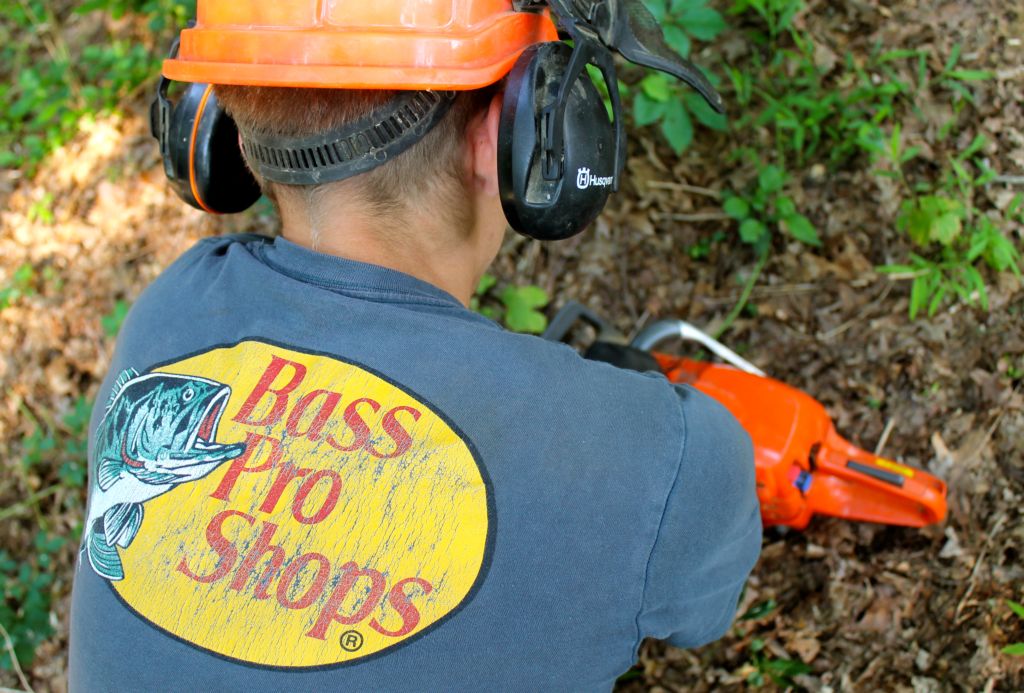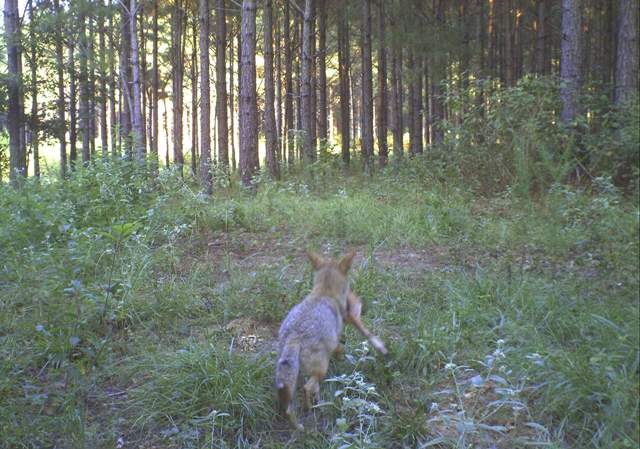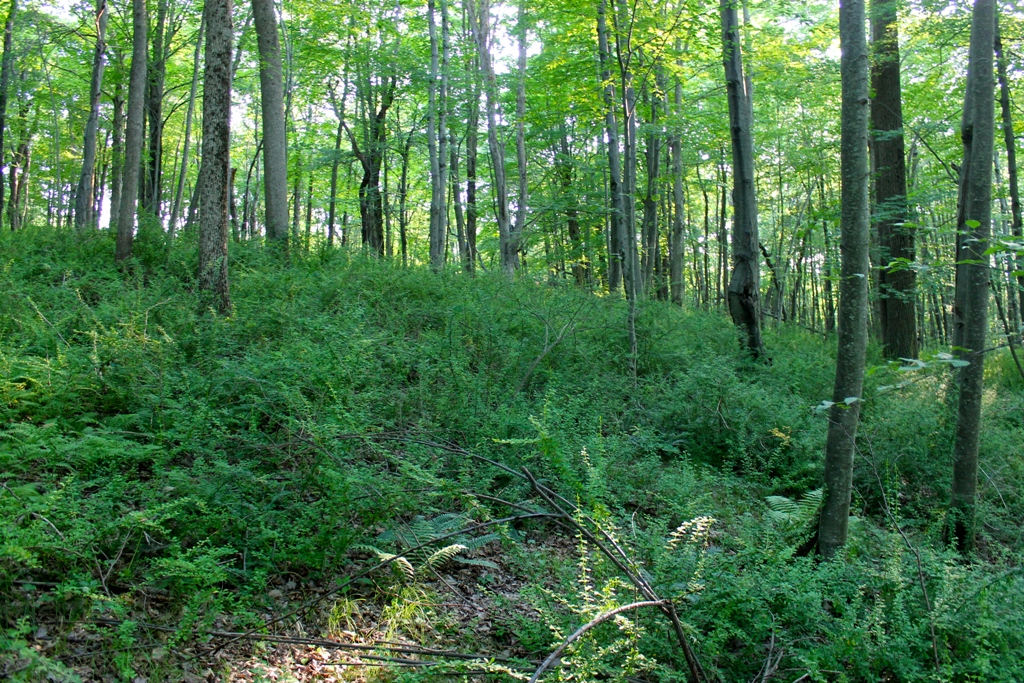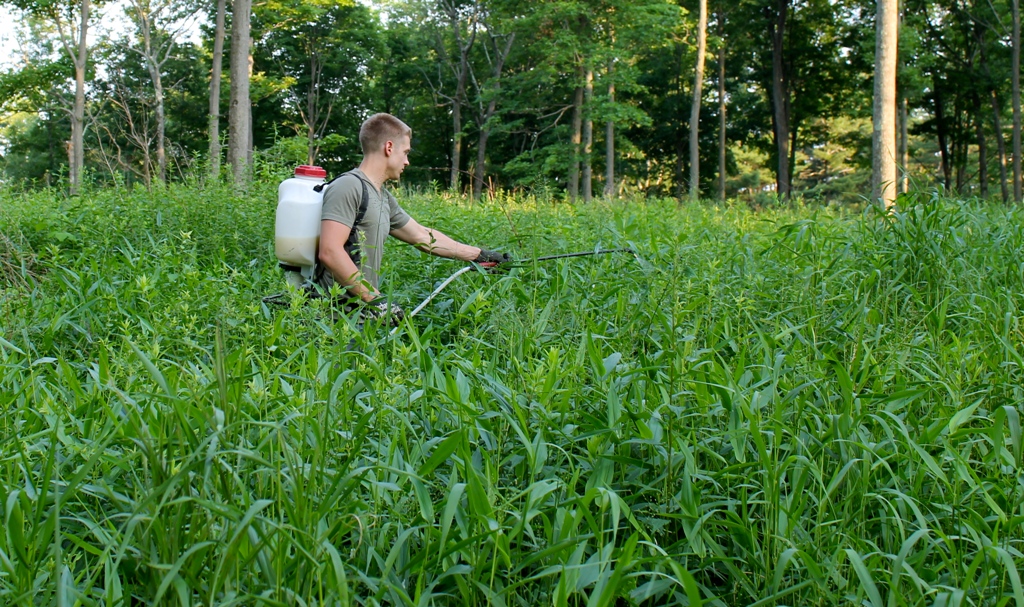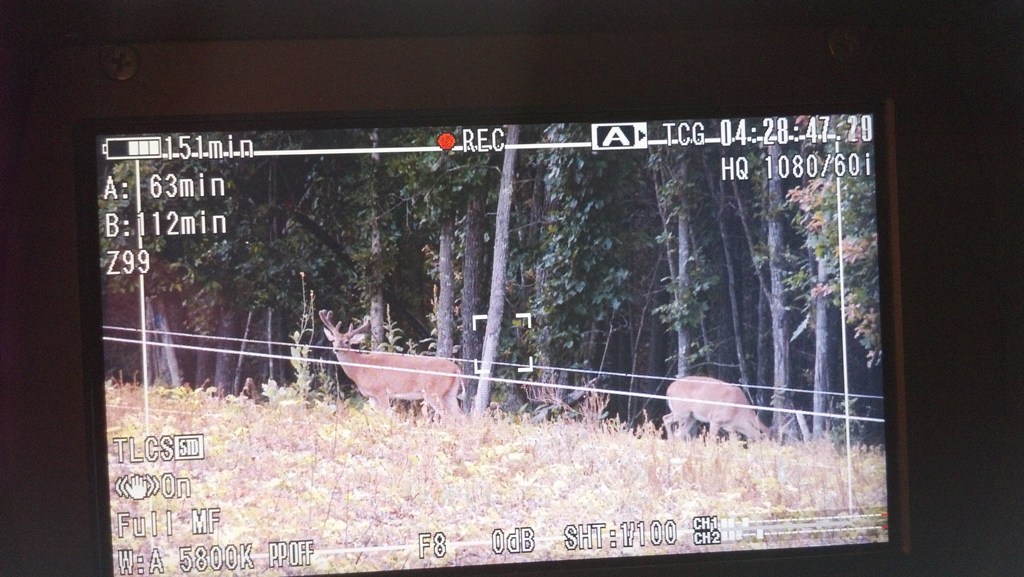Category: Hunting Blog
Cooking Deer Meat: My Favorite Marinade Recipe For Venison
I have a confession to make. Before I married Grant I never ate venison. You probably know the reason why. Bambi. That was all I could think about when my mother said that we were having deer meat for dinner. The first time she served it I refused to eat the meat. Guess what? The next time we had it she didn’t tell me it was venison. I probably ate a lot of beef that in reality was venison!
There are lots of people that I’ve talked to that say they have tried venison and do not like it. Now, confession number 2. I thought the same when Grant cooked venison for me in the early days when we were dating. There’s the old saying that love is blind, I think it must also affect the taste buds! Suddenly I was eating venison! Then with marriage and managing the budget, I realized that having all that venison in the freezer was a good thing for another reason! I no longer had to purchase red meat at the grocery store!
Over the years I’ve tried just about every way imaginable to cook venison. After almost 20 years I have a few favorites that make a regular appearance on our supper table. One of those is this marinade recipe that our friend David shared with us way back when. It’s great for venison, chicken, or beef. I use it primarily as a marinade for venison loin (some people call this back-strap) and tenderloin. I marinate the meat for 24 to 36 hours in the refrigerator, turning the meat several times during the process. Then I broil the marinated loin in the oven or grill it over a low flame. We prefer our meat to be medium well, so I cook the venison until the center is slightly pink. I take the meat off the grill and let it rest for five to ten minutes before slicing.
Do you have a favorite venison recipe? If so, please share it on our facebook page! I look forward to trying something new!
Cooking deer meat,
Tracy
Venison Marinade
1. Dale’s Steak Sauce, ½ cup
2. Lemon Pepper Seasoning, 1 tsp.
3. Minced Garlic, 2 -3 heaping TBS
4. Basil, 1 TBS dried or ¼ cup fresh minced
5. Vegetable or Olive Oil, 1/3 cup
6. Lemon Juice, ½ cup
7. Oregano, 1 TBS
8. Salt (optional), ½ tsp.
9. Worcestershire Sauce (optional) 1 TBS
I’ll pass along the advice that David wrote when he sent us the recipe: “This is the basic recipe. I have added things to it and taken some away over the years to arrive at the right combination for me. Do your own trial and error to see what you like.” Thanks, David!
Prescribed Fire Scouting
Late August can mean a couple different things for the GrowingDeer Team. If we’re receiving occasional rainfall and cooler temperatures we’re usually planting food plots. If the weather is hot and dry we’re headed out with drip torches in hand to practice some prescribed fire! I enjoy this management tool, but something I enjoy more than prescribed fire is scouting the terrain and trying to understand deer. This is where these two practices go hand in hand.
Prescribed fires here at The Proving Grounds usually consist of lots and lots of walking. We’re hiking up and down ridges, through valleys, over mountains, and back again. This is a great time for us to not only find bottlenecks and saddles on the ridges, but even more important, to find specific bedding areas that we might not have know existed. That’s exactly what I did earlier this week on one of our fires. While walking parallel down a north slope of a ridge I came upon a small ravine, or pocket. This “pocket” was a slight bowl-shaped spot in the middle of the slope where several trees had fallen over the years.
It was a mess to walk through, but then I noticed something. Located near the center of all the trees were several deer beds. These were not your typical smashed leaves where a deer had bedded one day and left. These beds were all dirt with no leaf material in them. This told me that these beds were being used on a more regular basis than most deer beds we find. Why this spot? Why would a deer be bedding here so much? I started to wonder more and more about this spot when I looked up and noticed the smoke from a fire just down the ridge. Most of the smoke from the fire was going up into the air and being carried away, but in the pocket the air was calm, still, and most importantly, swirling. Bingo, with the surrounding treetops serving as cover from intruders the small drop in the ridge also meant that the wind swirled and was unstable for most of the day. This was an ideal location for deer to bed down, feel safe, and survive!
I’m excited to know the location of this bedding area for the upcoming fall for a couple reasons. Butterbean, a hit list buck, has been very active on our Reconyx camera just down the ridge. Even better, we have a Muddy stand setup on both sides of this pocket in the ridge! Stay tuned to GrowingDeer.tv to see if we can capitalize on this new find!
Daydreaming of whitetails,
Adam
The Countdown To Hunting Season Continues
Here we are in the middle of August and our deer season is less than a month away. On September 5th Grant and I will be packing our bags and rolling east to Kentucky for the opener on September 6th. We’re pumped about it! We’ve been excited about deer season since turkey season ended last spring! There has been a lot of preparation for the upcoming season: shooting our Prime bows, hanging and trimming our Muddy stands, and organizing our gear. There is still one more step that should never be overlooked – scent control.
Scent control is a huge topic among hunters today. You’re opening up a can of worms when you bring up scent control techniques among a large group of hunters. As for the GrowingDeer.tv team, we believe wholeheartedly in scent control techniques, especially given the terrain we hunt in. The Ozark Mountains can be a tough place to hunt when trying to understand wind direction, thermals that rise and fall throughout the day and routine wind direction changes. That’s why it’s super important for us to give ourselves every advantage we can get when it comes to trying to harvest mature bucks. The preparation that goes into this doesn’t start the week of season. We are preparing for deer season all year round. Once season is finished we wash, dry and then store our clothing and gear in the ScentMaster Boxes. When deer season begins to come around again, we’ll drag out our clothing to be washed again. This helps control any scent that may have been absorbed while in storage. By hunting the wind correctly, using the complete system of Dead Down Wind products, and storing our gear in ScentMaster Boxes we have stepped up our game in scent control.
There are many skeptics in scent control, but there is only one question that needs to be asked to those skeptics. If scent control products (when used correctly) increase your success rate ever so slightly, why wouldn’t you want that advantage? “Ever so slightly” is in no way what Grant and I believe. After several years of using the system we believe that scent control plays a huge factor in our success rate.
Always remember that deer season preparation is year round!
Daydreaming of whitetails,
Adam
Estimating A Deer’s Age Is Easy If…
I receive lots of requests to estimate the age of bucks on my Facebook page. Oftentimes all that is posted is a picture of a buck and a few words like “How old?”
I rarely know what state the buck is from or the quality of the habitat where he lives. The habitat quality is very important information. Bucks tend to show signs of maturity much faster if they are living in poor habitat versus good quality habitat (the same is true for humans – stress is tough on all organisms!).
There’s one commonality that makes estimating a buck’s age much easier no matter what the quality of habitat where they live. That is if another buck (or two) is in the same picture!
Seeing multiple bucks in the same picture (or field) makes it much easier to compare body sizes, shapes, etc.
Martin from western Oklahoma shared this picture with me. At first glance it’s easy to tell multiple age classes are represented. Clearly the buck on the right is less mature than the buck on the left. It appears the buck in the middle is probably younger than the buck on the left – and older than the buck on the right.
The picture probably represents three age classes. We don’t often have three bucks in front of stands during hunting season. However by practicing estimating the age of bucks shown in pictures we can learn what characteristics to look for from our stands.
Growing Deer together,
Grant
Does Gunshot Noise Spook Deer?
Does the noise of a gunshot spook deer? The answer is “it depends.” I doubt deer are born with knowledge that the noise of a gun or the smell of burnt powder is often associated with danger.
Deer often learn from experiences and other deer to fear many of the sources of danger they face. For example deer certainly run from low flying helicopters when I’m doing aerial surveys in south Texas. However, deer commonly feed close by pads where the helicopter refuels frequently. They’ve obviously learned or been conditioned to accept the helicopter in that area as something that doesn’t present danger whereas the same helicopter flying low over the brush spooks 100’s of deer.
A friend recently shared a great example of how deer learn or can be conditioned to accept or reject smells, noises, etc., as a source of danger. Recently the National Scholastic Clay Trap Program (SCTP) meet was held in Sparta, IL. There were 3,000+ shooters that shot 700,000+ rounds during four days. It was constant shooting from early until late each day.
My friend Dan Appelbaum’s son was participating in the SCTP meet. During a round with shooters up and down the line for literally hundreds of yards deer starting feeding 80 yards or so directly in front of the trap house where Dan’s son was shooting!
The deer didn’t seem overly alert. In fact it distracted the shooters much more than the deer. Clearly the deer living in that area are conditioned to gun shots, the smell of gun powder, gun oil, humans, etc.
I’m sure just a short distance away a gunshot would cause deer to seek cover instantly if it was pointed directly at them.
This same knowledge of deer behavior can be applied to the presence of ATV’s, etc. If deer are conditioned to their presence and don’t have a reason to associate them with danger, it’s doubtful deer alter their activity patterns when they are present. If the source of the disturbance is new then deer probably become very alert and alter their activity patterns. Hunters need to consider these observations when they are scouting and hunting.
Growing Deer together,
Grant
Deer Stand Locations: Ambush Strategies
I recently read a report by the University of Michigan’s Museum of Anthropological Archeology about an interesting find at the bottom of Lake Huron. A research team discovered a network of structures that they suggest are hunting blinds and funneling structures left behind by caribou hunters. Their findings indicate that the ancient hunters had built rock structures to funnel caribou past ambush points.
Reading this struck me in a pretty cool way. Not only had I been working on a new Redneck Blind location that day, but I was also making plans to enhance the natural funnel to that particular blind. Apparently some hunting techniques never go out of style! I observed deer at this location last year and noted that there are two main routes the deer take past the location of that blind. One is at twenty and the other is at sixty yards. By strategically felling a couple of trees on the sixty-yard trail, I hope to increase the percentage of deer that pass the blind on the twenty-yard trail.
I always try to learn from observations and often move stands according to patterns I observe. However, there are some situations when it is easier to bring the deer closer to me, than it is for me to sit closer to them; this is where the chainsaw comes in. By felling or hinge cutting trees in a way that persuades deer to move around them, I have enhanced many stand locations. Deer often choose the path of least resistance and I prefer that path to be in prime range of my bow.
The next time you are in the stand, remember it is important to record deer encounters while hunting. That information can be very useful in developing your own ambush strategies for use in future hunts!
Happy trails,
Hunter
Protecting Fawns For The Future
Like most hunters, this is the time of year that I get really excited to see velvet antlers. I get just as excited when I see a flock of turkey poults or twin fawns! On these hot summer days seeing the next generation of wildlife, or more importantly – when I don’t see them, my thoughts turn to predators. It’s a good time to consider how beneficial my past trapping/hunting efforts have been and how I can improve on those efforts in the years to come. Are my techniques and timing helping the survival of deer and turkeys as I think they should?
Balancing predator populations can be an important part of any deer or turkey management plan. As it should, the subject has gotten a lot of attention over the last few years (watch episodes 122 & 220) by the hunting and science communities. It is important for hunters and land managers to note that the timing of predator removal is a critical component of predator removal.
Spotted fawns and turkey eggs and poults are most vulnerable to predation. The removal of predators during the spring and summer months is a critical component of predator control.
At first glance this may seem simple; however, the difficult part of the equation is that in many states, trapping season is restricted to fall and winter months. In my home state of Michigan it is only legal to trap coyotes from October 15th to March 1st. In contrast, our neighbors to the south in Ohio have no closed season on coyotes, allowing trap lines to be out through the critical time of the fawning and nesting seasons.
Check your local regulations and see if there are any summer predator seasons. Whether it’s the challenge of predator calling or you setting a Duke trap line, consider putting in a little extra time during those crucial months when the next generation of game species is most vulnerable to predation.
Happy trails (and full trap lines),
Hunter
Controlling Invasive Plants to Improve Deer Habitat
The heat of summer is upon us and our food plots and native vegetation are starting to mature. For me, this sea of green is a reminder to look at all the plants that are growing on the land that I hunt. Specifically, I am looking for invasive plants. When I find them, I mark the locations of these invasive species on a map. This helps me to more efficiently implement a control plan as well as track the spread of individual species from year to year. These plants take valuable resources such as sun, space, nutrients, and water away from other native vegetation that are more beneficial to a variety of wildlife species. Controlling invasive weeds is an important management tool to promote plants that provide quality cover and nutrition for whitetails.
A joint project by the University of Georgia and the U.S. Forest Service has a website that can help you identify potential invasive plants in your area (http://www.invasive.org). There are numerous invasive plant species throughout the United States. Each region of the US has different types of invasives that might include plants such as: princess tree, Russian-olive, mimosa trees, Japanese privet, nandina, Japanese barberry, shrubby nonnative lespedezas, bamboo, kudzu, Johnson grass, etc. After identifying an invasive species to target, it is important to consider multiple control methods. Many invasive plants can be controlled through prescribed fire, herbicide, or physical removal. Check out GrowingDeer.tv episodes 81, 185, 221, 222 for more information on a few of these methods.
One problem species in my neck of the woods is Berberis thunbergii or Japanese barberry. This spiny, deciduous shrub was introduced to the United States as an ornamental landscaping plant. Due to its resistance to deer browsing and ability to grow in full sun or shade, it is highly invasive. In the area I live, entire hardwood forests are laced with an understory of barberry.
Through chemical control (application of Glyphosate) and physical removal of Japanese barberry, it has been possible to transform undesirable habitat into a biologically diverse savannah that benefits deer and other wildlife. It is important to note that invasive control is often an ongoing process. Although this property has seen some success I must actively control new sprouts from the seedbed to prevent the return of barberry. Each year I walk all of the established savannahs with a back pack sprayer full of Glyphosate and treat any emerging barberry. If barberry is a problem on your property, click this link for more detailed information on alternatives for control.
There is no doubt that controlling invasive plants is a long process punctuated with a lot of hard work. However, a little extra boot leather each year ensures that my initial investment will pay huge dividends for the wildlife here for years to come. Whether you have a large invasive problem or just a few plants starting to pop-up next to that new food plot you put in last spring, controlling invasive plants is a beneficial tool to improve the wildlife habitat on the property that you hunt.
Happy trails,
Hunter
Scouting Bucks In June
Trying to pattern and harvest a mature buck sometimes seems like one of the toughest things to do in the world. They can be so illusive, so particular, and downright paranoid. The good thing about them is they seem to be creatures of habit, especially during the early season. They don’t try many new things and certainly don’t wander down the road (out of their home range) just to see what’s around the corner. With that being said, this is a great time of year to grab a pair of Nikon binoculars and head to the field and spot some bucks in velvet.
Recently I’ve been spending some evenings perched in a Redneck Blind watching over the Eagle Seed beans. Not only am I watching to see the number of deer that are using the beans, but more importantly I’m watching the location of these deer, where they prefer to feed, which areas they avoid, and finally where they enter the field. I monitor where they enter the field the most because this usually doesn’t change a great amount. They may enter the field from a different side on occasion but as a whole they usually approach from the same direction. Do you wonder why they do this? It’s simple, they feel safe this way. The wind currents may be in their favor, they might be able to see the entire field before entering, or maybe it’s the path of least resistance. Whatever the reasons, deer can be patterned by the way they approach a field.
This week I took two of our summer interns and headed to a plot we call Raleigh’s field. We have a 15 foot Redneck blind positioned on the eastern end of the field and we knew some bucks were using the area because of our Reconyx camera. We ended up seeing nine bucks and three does. A couple of the bucks were really nice! It was a great night, but what made the night even better was watching all nine bucks enter the field on the same trail. After watching all of this unfold I can guarantee you that over the next couple months we will be hanging a Muddy stand near that trail hoping to tag a nice buck come September!
It’s a great time of year to get out and scout some bean fields and locate some velvet bucks! Get out there and nail down that opening day location!
Daydreaming of whitetails,
Adam
Preparing For Deer Season: Food Plot Exclosure
The middle of June can be a boring time of the year for hunters. Turkey season has been closed for several weeks, even months depending on your state, and deer season is months away. The bucks are growing their antlers, but they’re a couple weeks away from really showing who they are. It’s a slow time of the year for a lot of hunters, but certainly not for the GrowingDeer team!
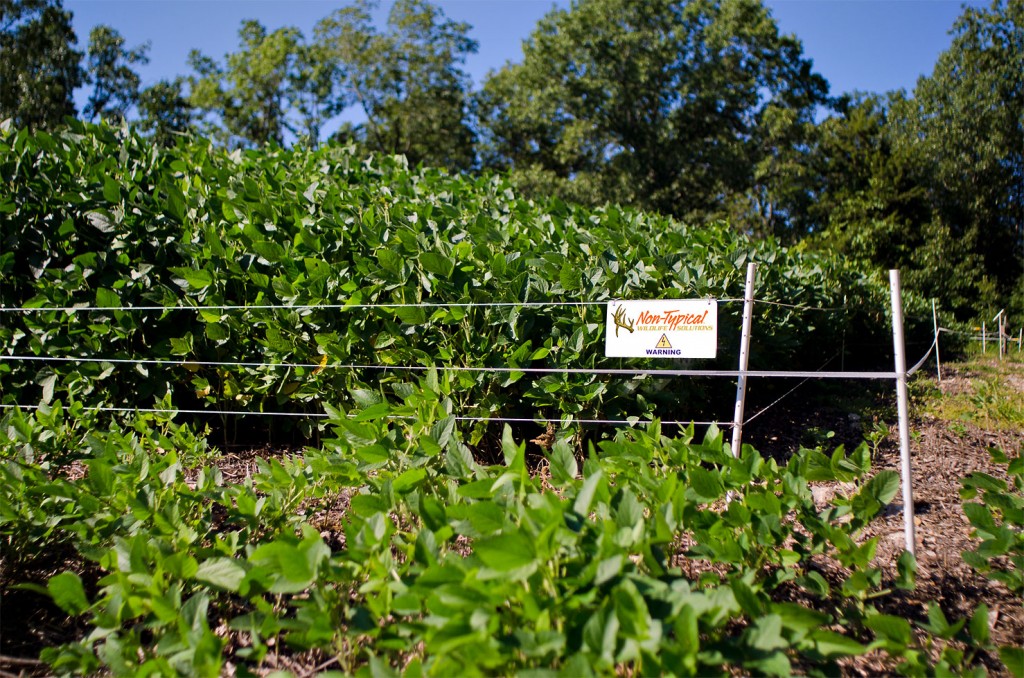
The Non-Typical Hot Zone fence is what we use to turn small food plots into dynamite hunting locations!
I’ve been sharing with you over the last couple of weeks several ways we are already preparing for deer season. Scent control, planting food plots, monitoring trail cameras, and now food plot exclosures. If you’re like me, not all your food plots are large in size. Food plots come in all sizes and shapes, but the small ones can be the most effective. Being small in size also means that the food source is more limited, making it susceptible to being over browsed and eliminating the chance of hunting over that food source during hunting season.
Grant and I found the solution to this problem a few years back when we laid our eyes on the Non-Typical Hot Zone fence. This system can protect up to a half acre food plot! It’s super easy to assemble and you can have a quick, simple, effective way to protect your crops. The Hot Zone fence uses two strands of poly-line and one strand of poly-tape, spaced apart appropriately. It looks like an average Joe, let alone a deer, can jump it but we’ve been amazed with the results! Check out episode 217 (watch here) to see an awesome evening of hunting for Grant and I over the Hot Zone fence.
There are several ways that hunters keep deer out of their food plots until the appropriate time, but few are as simple and effective as the Hot Zone fence. This simple tool and a little elbow grease can turn food plots into dynamite hunting spots in the coming months! We’ll continue to monitor our food plots as the summer progresses and share pictures of the difference between our unprotected Eagle Seed beans and the beans that are protected!
Daydreaming of whitetails,
Adam



